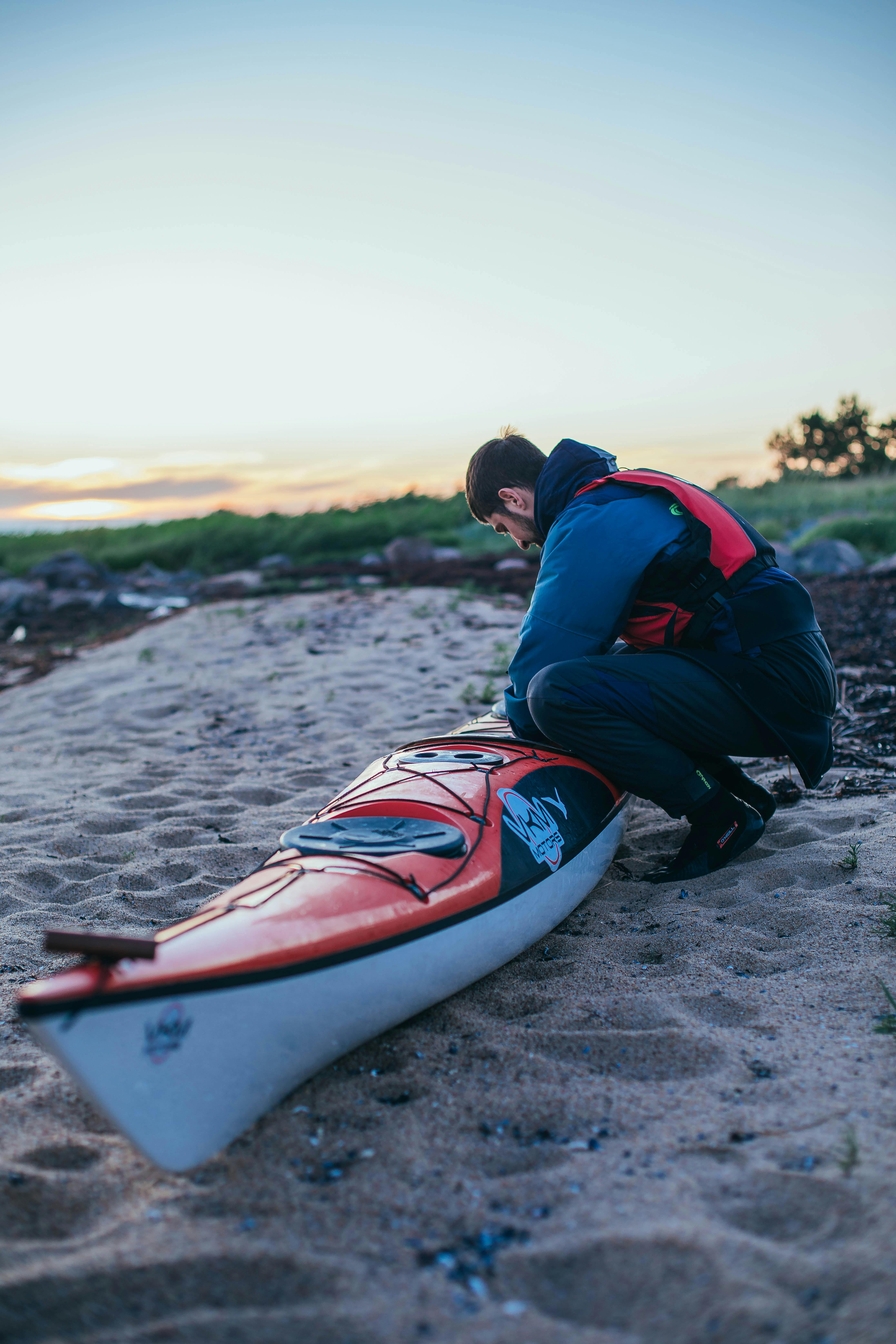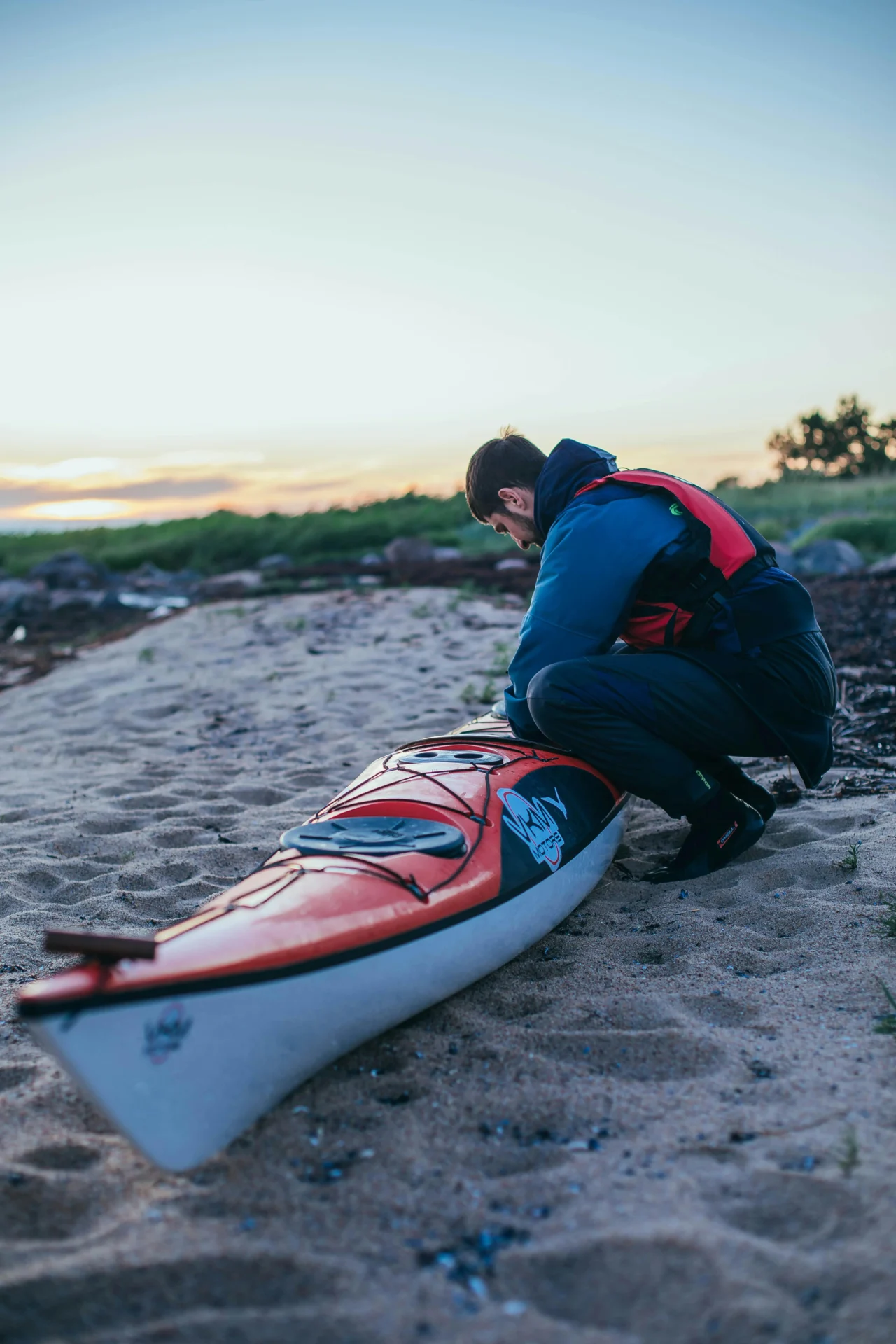Ever find yourself needing to fix your kayak but have no idea where to start? Don’t worry, we’ve all been there. Whether it’s a tiny puncture or a gaping crack, kayak damage can be a real buzzkill. But hey, it’s not the end of the world. Repairing your kayak can be a straightforward process if you know what you’re doing. In this guide, we’ll walk you through the three essential steps to get you back on the water in no time.
Table of Contents
ToggleFix Kayak: Assessing the Damage
Before you dive into any repair work, it’s critical to thoroughly assess the damage. This step is like diagnosing an illness before prescribing medication. You wouldn’t take cold medicine for a headache, right? The same principle applies here.
Kayak damage can range from minor scrapes to significant holes. Identifying the type and extent of damage will help you choose the most effective kayak repair methods and tools.

Source: Pexels.com
| Type of Damage | Description | Recommended Repair Method |
|---|---|---|
| Scratches | Surface-level abrasions | Sanding and polishing |
| Punctures | Small holes | Patching |
| Cracks | Long fractures | Welding or plastic repair |
Once you’ve pinpointed the issue, gather your tools. A typical kayak repair kit might include plastic welding rods, a heat gun, sandpaper, and a patching material. If you’re unsure about what to get, check out this DIY Kayak Fix: How To Repair A Hole In Your Kayak With Plastic video for more detailed instructions.
Fix Kayak: Preparing for Repair
Preparation is half the battle. This phase involves cleaning and drying the damaged area. You don’t want any dirt, grease, or moisture messing up your repair job. Use a mild detergent and water to clean the area, then let it dry completely. Trust me, a clean surface is crucial for a long-lasting fix.
Next, sand the edges around the damage to create a rough surface. This helps the patch or welding material adhere better. Think of it like giving the area a bit of “tooth” to hold onto. For more intricate cracks and holes, you might need to create a beveled edge using a utility knife.
While you’re at it, consider using a marker to outline the damaged area. It makes things easier when you’re applying your repair materials. If you’re feeling lost, this Reddit thread on how to repair a kayak hole has some great tips from fellow kayaking enthusiasts.
Fix Kayak: Performing the Repair
This is where the rubber meets the road. Depending on the type of damage, your repair method will vary. Let’s break it down:
Patching Small Holes
For small punctures, a patch is usually the way to go. Cut a piece of patching material slightly larger than the hole. Using a heat gun, warm up both the patch and the damaged area. Press the patch firmly over the hole and smooth out any air bubbles.
Watch this video on How to Repair a Kayak Hull for a step-by-step guide on patching techniques.
Welding Larger Cracks
For more severe cracks, plastic welding might be your best bet. Heat the cracked area using a heat gun until it’s malleable. Then, apply plastic welding rods to fuse the crack together. This method requires some skill, so don’t hesitate to practice on a scrap piece of plastic first.
Using Epoxy for Tough Repairs
If the damage is extensive, consider using a marine-grade epoxy. Mix the epoxy according to the instructions, then apply it to the damaged area. Epoxy takes longer to cure but offers a robust and waterproof seal.

Source: Pexels.com
Feeling overwhelmed? Here’s a quote to keep you motivated: “A smooth sea never made a skilled sailor.” Your kayak repair journey is just another step in becoming a proficient paddler.
Fix Kayak: Testing and Maintenance
Once you’ve completed the repair, it’s time to test your handiwork. Fill your kayak with water to check for leaks. If everything holds up, congratulations! You’ve successfully fixed your kayak. If not, don’t get discouraged; repeat the repair process as needed.
Regular kayak maintenance is essential for longevity. Clean your kayak after each use, store it away from direct sunlight, and inspect for damage regularly. These simple steps can prevent future problems and keep your kayak in top shape.
Preventive Measures
Prevention is the best cure. Avoid dragging your kayak on rough surfaces, and always use proper lifting techniques. Consider using a kayak cart for transportation. A little care goes a long way in preventing damage.
Seasonal Check-Ups
Perform a thorough inspection at the beginning and end of each season. Look for any signs of wear and tear, and address minor issues before they become major problems. For more tips, watch this video on How-To: Keel Rebuild – Repair Holes Caused By Dragging Your Kayak.
Fix Kayak: Key Takeaways
- Assess the damage thoroughly before starting any repair work.
- Prepare the surface by cleaning and sanding to ensure a strong bond.
- Choose the right repair method based on the type of damage.
- Test your repair and perform regular maintenance to extend your kayak’s life.
By following these steps, you’ll not only fix your kayak but also gain valuable skills for future DIY projects. Remember, practice makes perfect. So, don’t be afraid to make mistakes and learn along the way.
FAQs
Q: How to fix a punctured inflatable kayak?
A: Fixing a punctured inflatable kayak typically involves using a patch kit. First, locate the puncture by inflating the kayak and listening for escaping air. Clean the area around the puncture, then apply the adhesive and patch according to the kit instructions. Allow it to dry completely before inflating the kayak again.
Q: How do you repair damaged polyethylene?
A: Repairing damaged polyethylene usually involves plastic welding or using a specialized polyethylene repair kit. Clean and sand the damaged area, then use a heat gun and plastic welding rods to fuse the material back together. For minor repairs, a polyethylene-compatible adhesive can also be used.
Q: How to repair polyethylene plastic?
A: Polyethylene plastic can be repaired using plastic welding techniques. Heat the damaged area with a heat gun until it becomes pliable, then apply polyethylene welding rods to bond the material. Ensure the area is clean and sanded before starting the repair.
Q: What will stick to polyethylene?
A: Polyethylene is notoriously difficult to bond, but specialized adhesives like Loctite Plastics Bonding System or polyethylene-compatible epoxies can work. For best results, ensure the surface is clean and slightly roughened before applying the adhesive.

